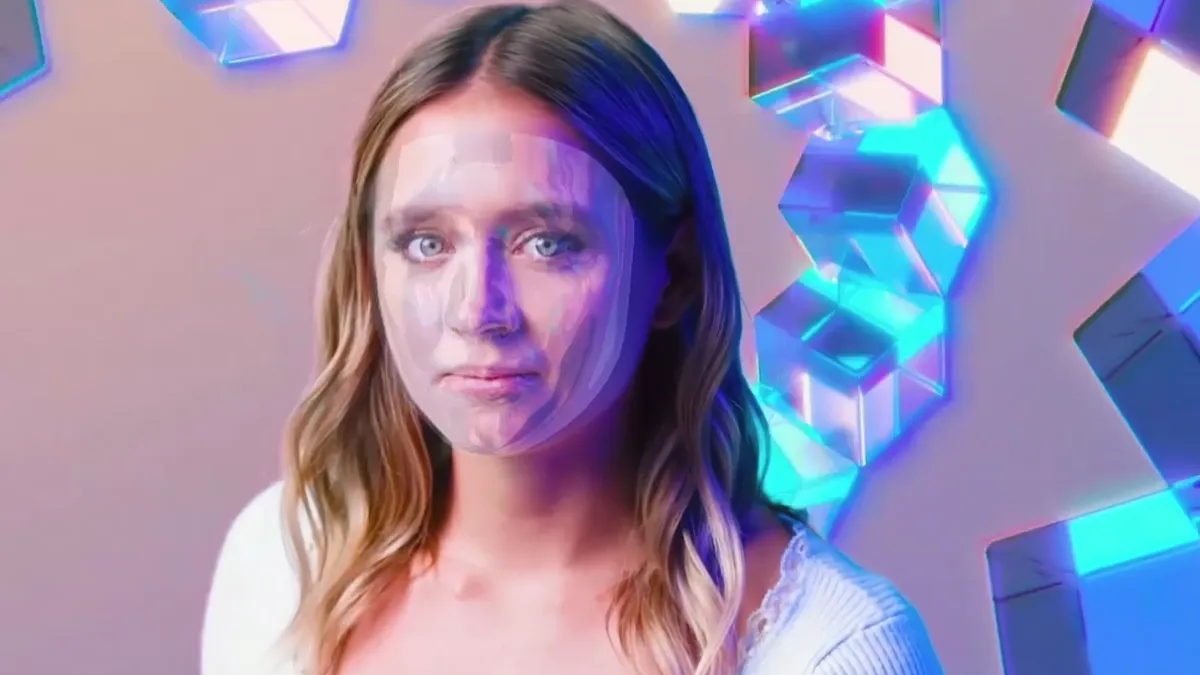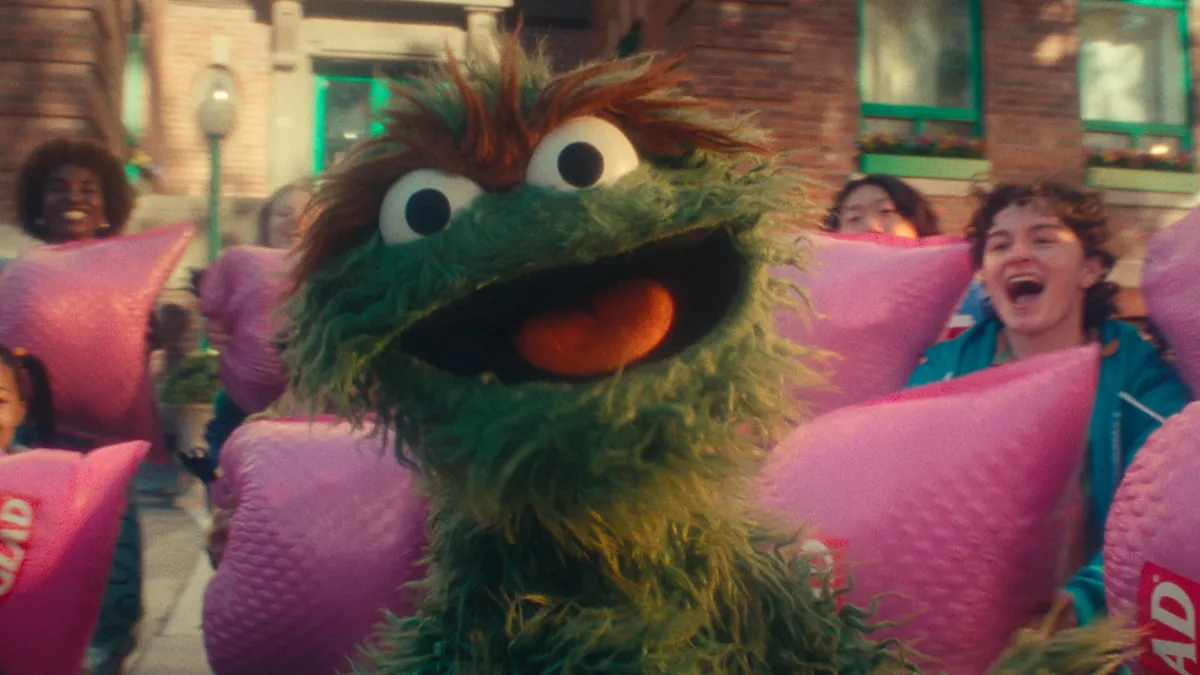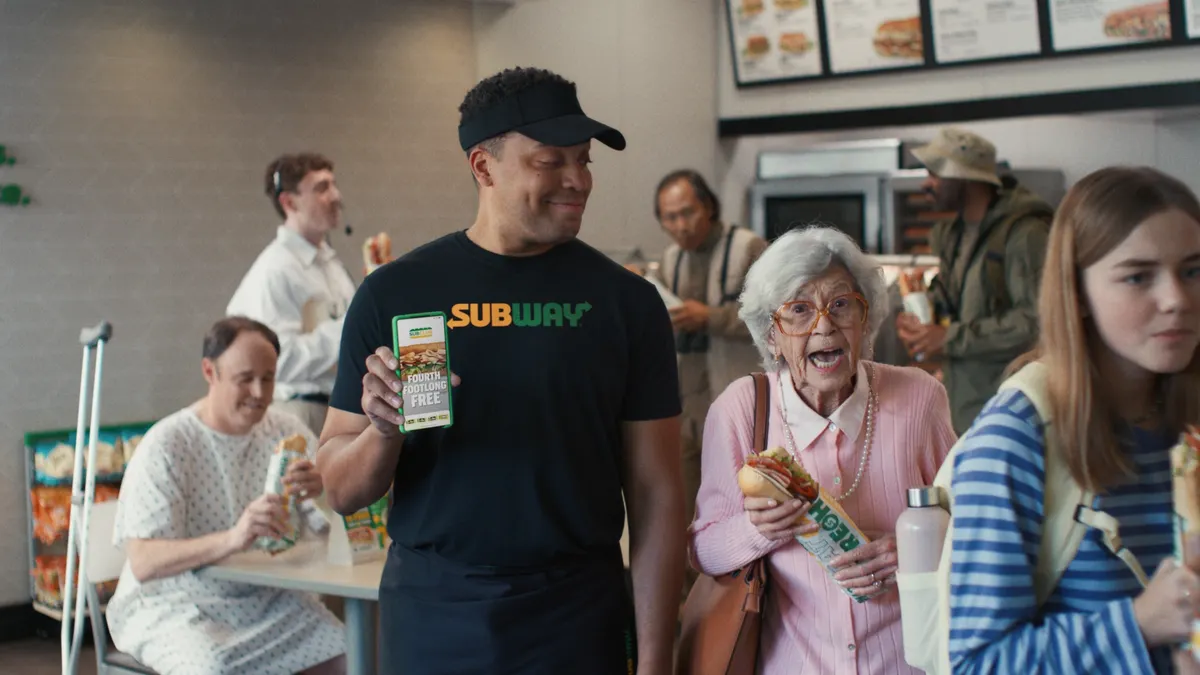TikTok is giving brands a way to create augmented reality (AR) effects for its social video app with the addition of Camera IQ's software tools. To prepare for the release today (April 28), the company collaborated with customers including Warner Bros. Discovery's Cartoon Network and Estée Lauder's Smashbox to create branded AR content on the social video app.
The AR authoring tools are available within TikTok's Effect House, the app's experimental hub for video creators, according to an announcement shared with Marketing Dive. The Effect House software, which is in beta testing, is available for download to Mac computers. Camera IQ lets brands create AR effects without writing computer code.
"This is just the very beginning of AR on TikTok and still the fairly early stages for AR overall as a vehicle to drive brand engagement," Allison Ferenci, CEO of Camera IQ, said by email. "The potential is practically limitless. Previously, brands were spending lots of money and many weeks of development work to build one AR experience, so with a design tool like ours, AR is starting to become more accessible than ever."
Cartoon Network is among the marketers that already have created AR content using the new tools. After a snippet of dialog from the show"Steven Universe" went viral last year, the network worked with Camera IQ to make an effect based on Garnet, the character who said the line. Thousands of TikTok users have made videos using the"Garnet Glasses" effect, helping Cartoon Network to engage fans of the show while raising awareness of its programming.
Building on that effort, Cartoon Network developed a "That's all folks!" effect based on the famous closing line by Looney Tunes' Porky Pig character. Even without any paid promotion for the effect, it has garnered over 4 million views as more than 14,000 fans incorporated it into their posts.
"The consumer experience on TikTok is one of both media consumption and content creation, and AR injects an element of fun and whimsy to both," Ferenci said. "AR also creates a powerful way for brands to interact with consumers by tapping into trending content and viral moments — or creating their own viral moments."
Cosmetics brand Smashbox also teamed with Camera IQ to create a TikTok AR effect for a new line of products. The"Smashbox Illuminate" effect became its most-viewed branded content on TikTok, with an engagement rate of 50% in the first 10 days after launch.
Prepare to experiment
As with any new feature on a social media platform, there is room to experiment and identify what kind of content engages users while raising brand visibility. AR content adds another dimension to what marketers can create on TikTok.
"It's still the early days of AR on TikTok, so at this point, anything goes," Ferenci said. "A good way to think about a TikTok AR strategy is to leverage the platform's inherent capabilities for storytelling, creativity and self-expression. They should ask themselves how they can create AR effects that aren't just an overlay to a story post but become a more immersive and central part of the story, where consumers are actively playing with the effect."
In the U.S., 33% of teenagers said TikTok was their favorite social media platform, ahead of Snapchat at 31% and Instagram at 22%, according to a survey by investment bank Piper Sandler. That popularity helps to set the stage for future media usage that will affect the way brands reach younger consumers as they mature and their spending power grows.
“The TikTok community doesn't just consume media but also plays a role in riffing and remixing the content. They are both media consumers and co-creators."

Allison Ferenci
CEO, Camera IQ
Part of TikTok's appeal is its set of user-friendly creation tools that give amateurs the ability to shoot videos with special effects and soundtracks. Users don't have to follow other accounts to see a bottomless feed of viral videos, though some independent creators have amassed tens of millions of followers. Camera IQ sees more opportunities for brands to participate in these creator-driven interactions.
Instead of limiting themselves to static images and traditional videos, marketers can use Camera IQ's tools to make virtual objects that are more interactive and immersive. With consumers expecting to spend more time in computer-generated environments, brands are experimenting with ways to have a metaversal presence.
"The TikTok community doesn't just consume media but also plays a role in riffing and remixing the content. They are both media consumers and co-creators," Ferenci said. "If brands can insert themselves into the stories being told and the content being created, it makes for a winning strategy."




















